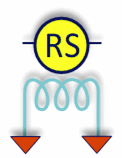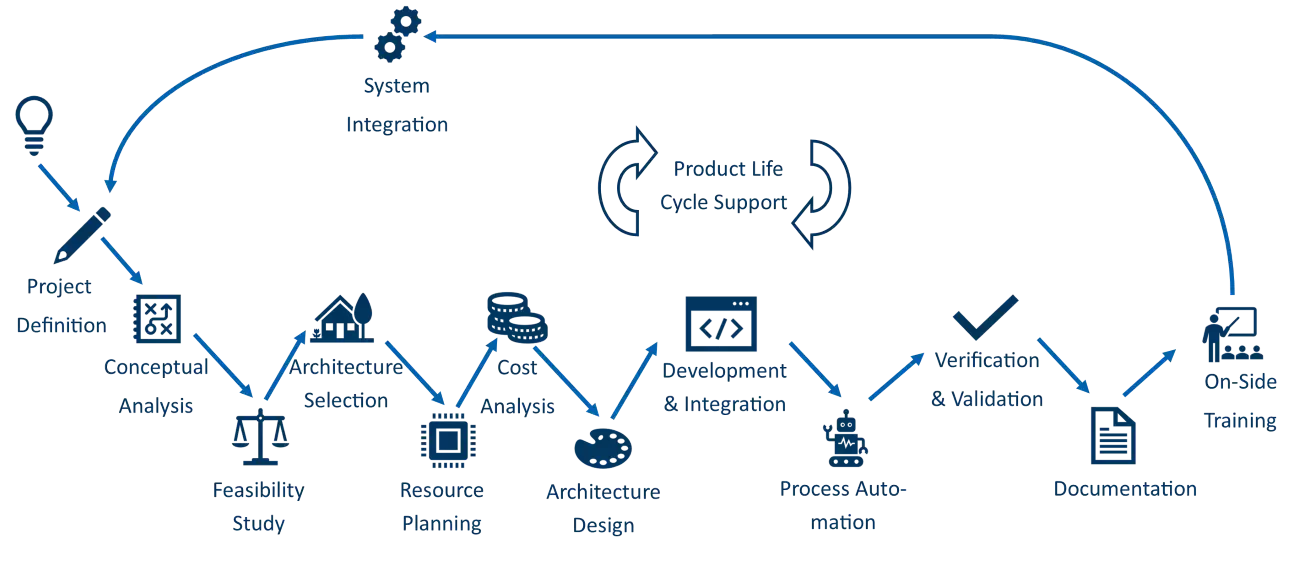Life Cycle Product Development
- Project Definition
- Conceptual Analysis/ Requirements Analysis
- Feasibility Study
- Architecture Selection
- Resource Planning
- Memory System and Performance Planning
- Hardware BOM Components Selection, ...
- Cost Analysis
- Soft- and Hardware Architecture Design
- Final detailed architecture conception of the HDL and Software Design
- Development and Integration
- HDL Interface Development
- HDL SoC Platform Development and Integration
- with Industry-Standardized Interfaces (e.g. Arm® AMBA® AXI)
- using SoC FPGA Vendor official Interface Design Tools (e.g. Intel® Quartus® Prime Platform Designer)
- Low-level Software Development (Driver, Bootloader, ...)
- High-level Software Development (Applications, ...)
- Process Automation
- Python-based Automation of the needed Build Flow
- To allow simple further Development for non-Soc-FPGA experts
- To enable the automated pre-configuration of the Hardware during Manufacturing
- Verification & Validation
- Using Industry-leading Verification and Validation Tools from Siemens® EDA, Arm®, Intel® and Microsoft®
- Comprehensive Testing with amongst other things automated Testbenches
- Documentation
- On-Side Training
- Product Life Cycle Support
- Implementation of custom Features
- Updates & Service


